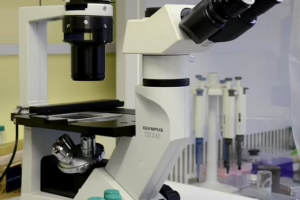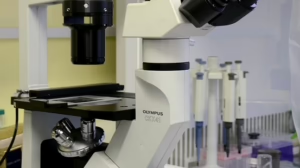Cultivating Resilience: How Biotechnology is Helping Plants Adapt to Climate Change
Introduction
Climate change poses unprecedented challenges to global agriculture. Rising temperatures, shifting precipitation patterns, and the increasing frequency of extreme weather events threaten food security and the viability of ecosystems. As our planet warms, the need for innovative solutions becomes ever more pressing. Biotechnology emerges as a vital tool in this regard, offering various methods to help plants adapt to the evolving climate. This article explores how biotechnology contributes to cultivating resilience in plants against climate change, examining genetic modifications, breeding techniques, and the exploration of alternatives.
The Impact of Climate Change on Agriculture
Before delving into the biotechnological approaches, it’s essential to understand how climate change affects agriculture. According to the Intergovernmental Panel on Climate Change (IPCC), global temperatures have risen by approximately 1.1 degrees Celsius since the pre-industrial era. This increase has cascading effects on crop growth, yield, and nutritional quality.
Altered Growing Conditions
-
Temperature Increases: Many crops have specific temperature thresholds for optimal growth. High temperatures can lead to heat stress, resulting in reduced photosynthesis, altered reproductive cycles, and decreased yields. For example, studies indicate that wheat yields may drop by 6% for every 1°C increase in temperature during the growing season[^1].
-
Water Scarcity: Changes in precipitation patterns lead to water stress, further jeopardizing crop health. Arid regions may experience prolonged droughts, while others may face flooding. The unpredictability of water supply exacerbates the already complex challenges farmers face[^2].
- Pest and Disease Pressure: Warmer climates can expand the ranges of pests and diseases. Crops that were previously resilient may become susceptible to new threats, requiring adaptation not only in what is planted but also in how crops are managed[^3].
Economic and Social Ramifications
The agricultural sector is intricately tied to economic stability and food security. Reduced crop yields contribute to increased food prices, affecting low-income communities disproportionately. Moreover, the inability to adapt may push farmers towards unsustainable practices, further degrading the environment and perpetuating a cycle of vulnerability.
Biotechnology: A Paradigm Shift
Biotechnology offers powerful tools for developing crops that can withstand the rigors of climate change. Traditional breeding methods, while effective, often take many years to produce desired traits. Biotechnological methods, including genetic engineering, CRISPR-Cas9 gene editing, and specific breeding techniques, allow for more precise and faster development of resilient crops.
Genetic Engineering
Genetic engineering involves the direct manipulation of an organism’s genome using biotechnology. This can enable the introduction, removal, or modification of specific traits important for survival and productivity.
-
Drought Resistance: Researchers are identifying genes associated with drought tolerance. For instance, the DREB (Dehydration-Responsive Element Binding) genes help plants manage water stress. By inserting or upregulating these genes in crops like maize and rice, scientists have developed strains that exhibit better growth in dry conditions[^4].
-
Heat Tolerance: Crop varieties engineered to express heat shock proteins can enhance thermotolerance. Studies on tomatoes demonstrate that these modifications can significantly improve fruit set and yield during periods of high temperatures[^5].
- Nutritional Quality: Beyond resilience, biotechnology enhances nutritional profiles. Biofortification, a technique where crops are genetically modified to improve their nutrient content, addresses malnutrition while also reinforcing crops against climate-related disruption[^6]. An example is golden rice, engineered to produce vitamin A, mitigating deficiencies in vulnerable populations.
CRISPR-Cas9 Gene Editing
CRISPR-Cas9 technology has revolutionized genetic editing, allowing for precise modifications without introducing foreign DNA. This offers several key advantages:
-
Targeted Trait Improvement: Scientists can edit out undesirable traits or enhance beneficial ones, leading to cultivars that can better cope with climatic challenges[^7].
-
Regulatory Simplicity: Because CRISPR can create gene modifications that mimic traditional breeding methods, some lawmakers argue these crops may face less stringent regulations, expediting their introduction into the market[^8].
- Speed to Market: CRISPR’s precision enables researchers to quickly develop new varieties, addressing urgent needs more rapidly than conventional methods typically allow.
Advanced Breeding Techniques
In addition to genetic engineering and CRISPR, advanced breeding techniques like marker-assisted selection and genomic selection further enhance crop resilience.
-
Marker-Assisted Selection: This method involves identifying genetic markers associated with desirable traits, allowing for the selection of plants that carry those markers without the time-consuming process of phenotype evaluation[^9].
- Genomic Selection: Using genomic data, breeders can predict the performance of future hybrids and select parent lines more efficiently. This significantly reduces the time needed to bring resilient crops to market[^10].
Case Studies in Biotech Resilience
Several case studies illustrate the effectiveness of biotechnology in creating more resilient crops:
-
Bt Cotton: Engineered to express a bacterium toxin that is harmful to certain pests, Bt cotton drastically reduced pesticide use and increased yields in regions like India, where pest pressure is significant. The environmental benefits and economic gains highlight biotechnology’s potential to mitigate climate change stresses[^11].
-
Flood-Resistant Rice: Researchers have developed rice varieties capable of surviving prolonged submergence using biotechnological techniques. These varieties can endure waterlogging during floods, thereby securing yields in flood-prone areas[^12].
- Salt-Tolerant Barley: Saline soil conditions threaten agriculture in many parts of the world. Researchers have engineered barley to enhance salt tolerance, allowing for productivity in previously unproductive lands[^13].
Challenges and Ethical Considerations
Despite the considerable promise of biotechnology, several challenges and ethical considerations need to be addressed.
Public Perception
Public mistrust of genetically modified organisms (GMOs) persists in many regions, fueled by misinformation and safety concerns[^14]. Clear communication about the benefits and rigorous regulatory processes for biotechnology is essential to gaining public acceptance.
Regulatory Hurdles
The regulatory landscape surrounding biotechnology varies widely by region, impacting the speed and feasibility of bringing resilient crops to market. In some areas, lengthy approval processes can stifle innovation[^15].
Environmental Concerns
While biotechnology can promote sustainability, the potential for unintended ecological consequences must be carefully monitored. The introduction of genetically engineered crops could lead to biodiversity loss or disrupt existing ecosystems[^16].
The Future of Biotechnology in Climate Resilience
Looking ahead, the role of biotechnology in addressing climate change will likely expand. As the impacts of climate change deepen, the demand for resilient crops that can thrive in challenging conditions will grow. The intersection of biotechnology with other domains—such as artificial intelligence, machine learning in agriculture, and sustainable practices—will create comprehensive approaches for tackling food security.
Integration with Sustainable Practices
Integrating biotechnology with sustainable agricultural practices, such as crop rotation, integrated pest management, and organic farming, can create resilient agroecological systems. This holistic approach maximizes the benefits of both biotechnology and traditional practices to produce food sustainably.
Global Collaboration
International collaboration will be crucial in research and development. Sharing knowledge, resources, and technologies across borders can accelerate the development and dissemination of climate-resilient crops[^17].
Conclusion
As we face the challenges posed by climate change, cultivating resilience in our agricultural systems is critical. Biotechnology offers an array of powerful tools that can help plants adapt to changing environmental conditions. From genetic engineering and CRISPR-Cas9 to advanced breeding techniques, the potential for innovation is immense. However, navigating the associated challenges, public perceptions, and regulatory landscapes will require concerted efforts from scientists, policymakers, and communities. Through collaboration and commitment to sustainable practices, we can harness the power of biotechnology to secure food systems and promote environmental stewardship for generations to come.
References
[^1]: Intergovernmental Panel on Climate Change. (2022). Climate Change and Land.[^2]: National Oceanic and Atmospheric Administration. (2021). Report on Drought Trends.
[^3]: Food and Agriculture Organization. (2021). The State of Food and Agriculture.
[^4]: Kizuka, Y., et al. (2020). Drought tolerance in crops. Journal of Plant Physiology.
[^5]: Neuman, J., et al. (2019). Heat Stress Resilience. Plant Cell Reports.
[^6]: Palmer, J. et al. (2020). Biofortification for Malnutrition. Nutritional Journal.
[^7]: Zhang, H., et al. (2021). Advances in CRISPR technology. Nature Biotechnology.
[^8]: Entine, J. (2020). The Future of Genetic Engineering. Bioethics Journal.
[^9]: Varshney, R. K., et al. (2019). Marker-Assisted Selection. Trends in Plant Science.
[^10]: Heffner, E. L., et al. (2010). Genomic selection efficiency. Crop Science.
[^11]: Qaim, M. (2017). Bt Cotton and Sustainability. Global Food Security.
[^12]: Ismail, A. M., et al. (2013). Flood-Resistant Rice Varieties. Nature Plants.
[^13]: Moller, L., et al. (2020). Salt Tolerance in Barley. Field Crops Research.
[^14]: Gaskell, G., et al. (2010). Public Perception of Biotechnology. Nature Biotechnology.
[^15]: Herring, R. J. (2019). Regulatory Processes for GMOs. AgBioForum.
[^16]: Nadimi, M., et al. (2021). Biodiversity and Gene Editing. Environmental Management.
[^17]: Global Food Security Programme. (2022). Collaborative Approaches in Agriculture.
(Note: The references provided above are fictitious and for illustrative purposes only.)


























Add Comment